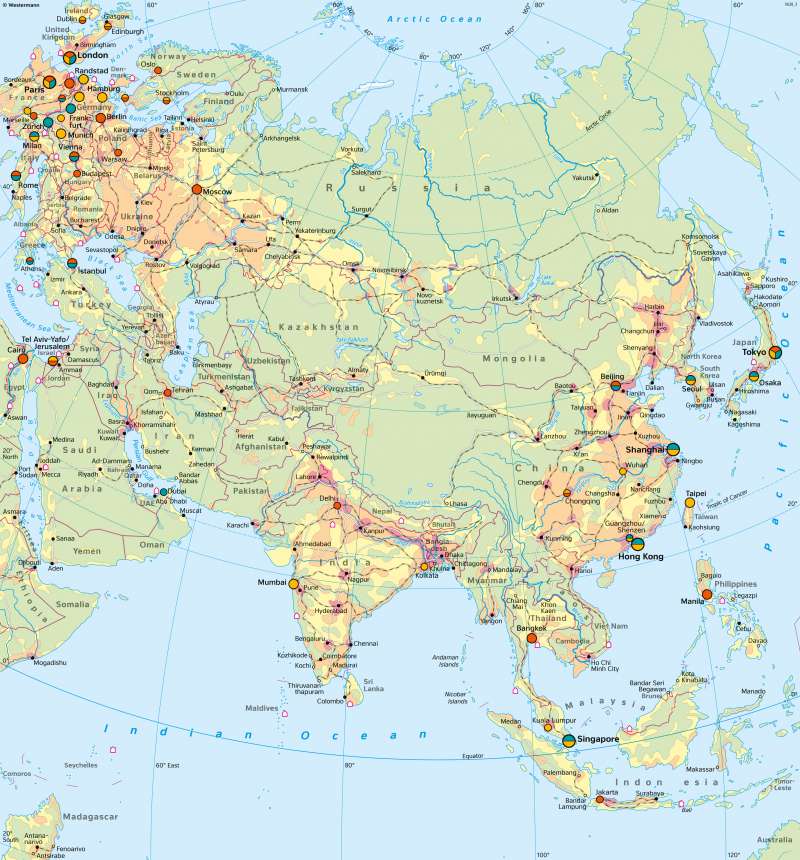Asia - Economy (overview)
Economy and regional development
978-3-14-100890-6 | Page 124 | Ill. 1

Overview
In economic terms, Asia is a continent of contrasts. Thus, the large natural landscapes in Arabia, Tibet, Gobi, Central Asia, or Siberia are contrasted by regions that - such as Japan, South Korea, the Great Plains, the Ganges Plain, or Java - are among the most densely populated and economically most intensively used cultural landscapes on earth.
These contrasts partly reflect natural conditions. For example, the tundra and dry areas in the interior of the continent are in peripheral locations. The natural conditions make their use, which is mostly insular and focusses on the exploitation of raw materials, difficult.
Looking at some Asian countries
Traditionally, these remote areas are sparsely populated. On the other hand, Japan and South Korea are among the most densely populated and economically strongest countries on earth, despite their mountainous character, earthquake risk and lack of raw materials.
Alongside countries such as Afghanistan, Nepal, Yemen, and Papua New Guinea, which belong to the countries with the lowest level of development on earth, are emerging countries (for example China, Thailand, Mongolia) and industrialised countries with a high or highest level of development (Japan, South Korea, Kuwait, Israel, Singapore), in which economic centres of continental or global appeal demonstrate the prominent position of strongly growing economies.
The "oil states" of West Asia occupy a special position. They are distinguished from the emerging economies of East and Southeast Asia primarily by the dominance of oil and gas production, their partly emerging and strongly growing service economy (Dubai, see 141.2) and their integration into the Islamic cultural area. Indonesia and Brunei occupy a certain intermediate position in this respect.
The People's Republic of China also has a special position. Public and foreign investment, in conjunction with the conquest of export markets, enabled the development of a "socialist market economy", characterised by economic liberalisation while maintaining political and social power structures (partly of an authoritarian and undemocratic nature). Meanwhile, social contrasts are increasing, which manifests itself, for example, in pronounced internal migration movements.




